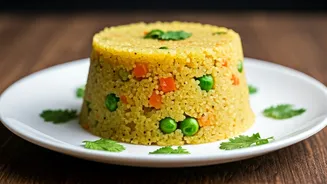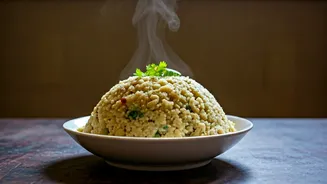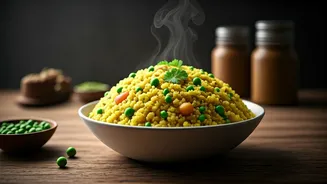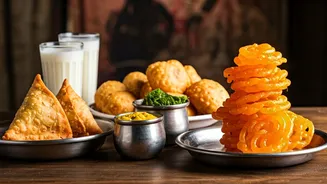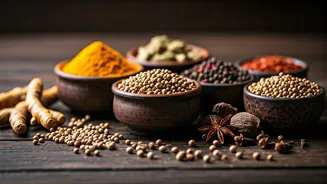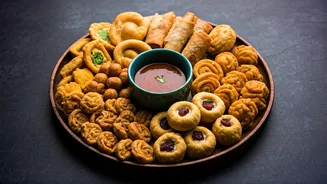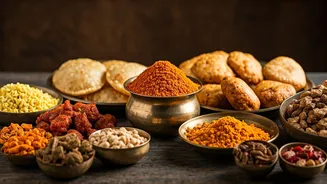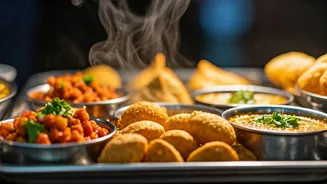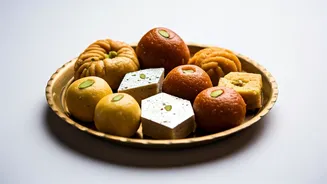Upma's Grand Entrance
Upma, a breakfast dish popular throughout India, has officially been recognized as one of the '50 Best Porridges in the World.' This acknowledgment signals
the culinary impact of a traditionally simple yet widely cherished dish. It highlights upma's ability to capture the taste buds of people globally, which is a significant achievement for Indian cuisine. The news reflects how regional specialties are increasingly gaining wider recognition and appreciation on the global stage, which promotes cultural exchange. The recognition on the prestigious list emphasizes the unique flavors and textures that define upma, a dish that manages to be both comforting and flavorful. The list’s criteria likely considered several factors, including taste, texture, cultural significance, and the overall experience of enjoying the dish. The accolade serves as a tribute to the chefs, home cooks, and all who helped keep the traditions of upma alive, ensuring that this simple dish continues to enchant people worldwide. Upma's inclusion in the list is a moment of pride, emphasizing that Indian dishes can stand alongside international culinary masterpieces.
Flavorful Semolina Symphony
Upma is a well-known breakfast dish in India that is made with semolina (rava), a type of coarse wheat flour, and a blend of vegetables and spices. The precise recipe and ingredients often change based on regional and personal preferences, contributing to the variety of the dish. A typical upma recipe begins with dry-roasting the semolina to enhance its flavor before it is cooked with water, vegetables such as onions, tomatoes, and green chilies, and seasonings like mustard seeds, curry leaves, and asafoetida. The addition of different vegetables, such as peas, carrots, and bell peppers, adds a variety of textures and nutrients to the dish. Often, a squeeze of lemon juice and a garnish of fresh coriander are added to improve the flavor. Upma's taste profile is a blend of savory, mildly spicy, and slightly tangy components. The soft, creamy texture of the semolina combines with the crunchy vegetables, which makes it an appealing dish. Its versatility makes it a favorite for many, and variations are popular throughout India.
Global Porridge Perspective
The '50 Best Porridges in the World' list probably considers a variety of aspects when selecting its entries, encompassing a range of flavors, ingredients, and cultural relevance. These criteria are likely to include taste, which is determined by the combination of sweet, savory, and umami tastes in a porridge; the texture, covering the consistency and mouthfeel of the food; and the presentation, which focuses on how the dish is served. The cultural significance of a porridge plays a major role; it shows how it's integrated into daily life and celebrations. Dishes are also considered for their nutritional value, reflecting the components' health advantages and how they support a balanced diet. The selection process might include judging various regions and culinary traditions, presenting a diverse group of dishes. The list functions as a way to expose people to different tastes, highlighting the global significance of comfort food. The recognition offered by the list contributes to the growth of culinary tourism and promotes the appreciation of diverse global food cultures.
Celebrating Culinary Heritage
The recognition of upma on the '50 Best Porridges in the World' list is a celebration of Indian culinary heritage. This acknowledgment honors the years of tradition and the inventive creativity that characterize Indian cooking. The widespread acceptance of upma signifies that Indian cuisine has a special place in international culinary traditions. The prominence of the dish is a result of its distinct flavors and the cultural significance it has, which highlights India's rich and diverse culinary heritage. This recognition provides an opportunity to showcase the culinary skills that have been passed down through generations. The prominence of upma highlights the global impact of Indian food, motivating further exploration of its many flavors and recipes. It reinforces the notion that Indian food provides more than just nourishment; it is also a cultural expression that unites people from different backgrounds. The prize represents the ongoing influence of Indian cuisine on the international culinary scene.
